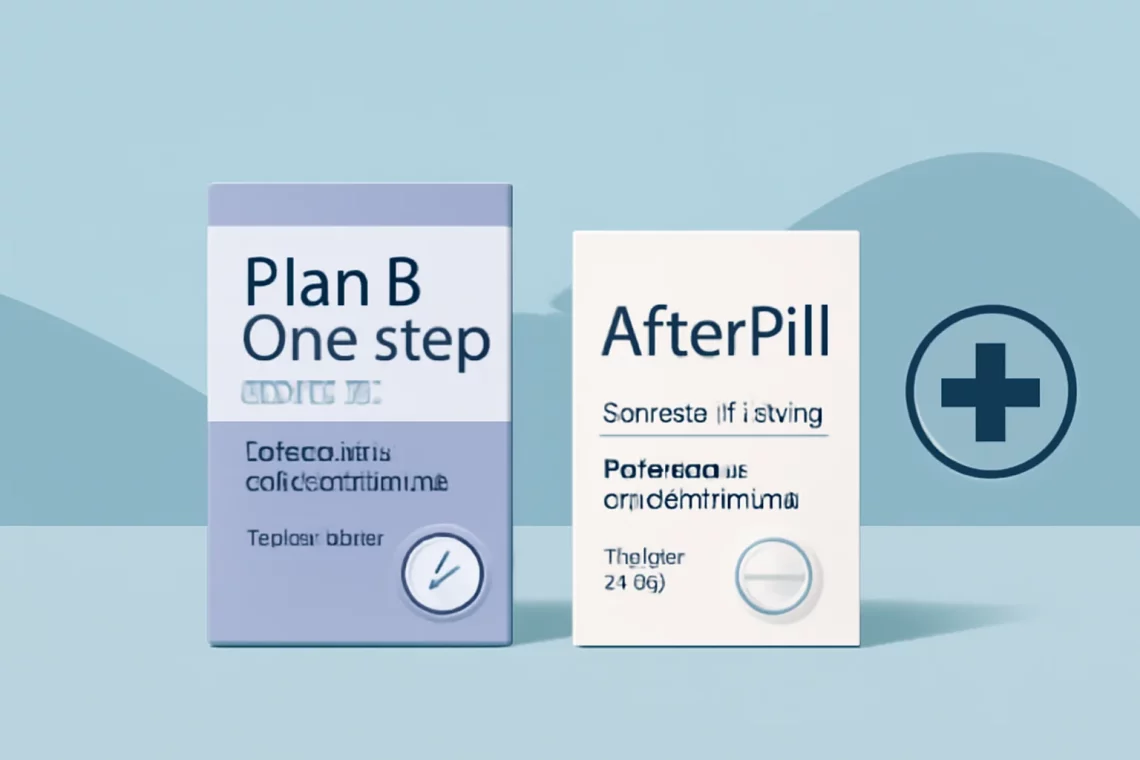
Plan B vs AfterPill: Comparing Emergency Contraceptive Options
In today’s fast-paced world, the topic of emergency contraception has gained significant attention. With the rising awareness of reproductive health and women’s rights, it’s essential to understand the options available for preventing unintended pregnancies. Among these options, Plan B and AfterPill are two of the most commonly discussed emergency contraceptive pills. These medications have sparked numerous conversations about their effectiveness, accessibility, and the implications of their use.
Emergency contraception serves as a safety net for individuals who may have experienced contraceptive failure or unprotected intercourse. Understanding the differences between various options empowers individuals to make informed choices, especially in critical situations. As the conversation surrounding reproductive health continues to evolve, it is vital to dissect the nuances of these emergency contraceptive pills, their mechanisms, and their role in a comprehensive health strategy.
Both Plan B and AfterPill are designed to be used after unprotected sex, but they vary in formulation, dosage, and availability. This not only influences their effectiveness but also dictates how and when they should be taken. Knowledge about these differences is crucial for anyone considering emergency contraception.
Understanding Plan B
Plan B, often referred to as the “morning-after pill,” is a widely recognized form of emergency contraception. Its primary ingredient is levonorgestrel, a synthetic hormone that works primarily by preventing ovulation. When taken within 72 hours after unprotected intercourse, Plan B can significantly reduce the risk of pregnancy. However, its effectiveness diminishes the longer you wait, emphasizing the importance of timely use.
One of the key features of Plan B is its over-the-counter availability in many regions, making it accessible without a prescription. This availability is crucial, as it allows individuals to obtain the medication promptly when they need it most. The pill is designed for single-use, with a recommended dosage of one tablet. It’s essential to follow the instructions carefully to maximize its effectiveness.
Plan B is most effective when taken as soon as possible after unprotected intercourse. Research indicates that it can reduce the risk of pregnancy by up to 89% when taken within the recommended timeframe. However, it is important to note that Plan B will not be effective if ovulation has already occurred. This limitation underscores the importance of understanding the timing of one’s menstrual cycle when considering emergency contraception.
Some users may experience side effects, which can include nausea, fatigue, headache, and changes in menstrual bleeding. While these side effects can be uncomfortable, they are typically short-lived. It’s also worth noting that Plan B does not protect against sexually transmitted infections (STIs) or serve as a regular form of contraception.
In summary, Plan B is a reliable option for emergency contraception when used correctly and promptly. Its over-the-counter status increases accessibility, allowing individuals to take control of their reproductive health in a timely manner.
Exploring AfterPill
AfterPill is another option for emergency contraception that has gained popularity in recent years. Like Plan B, AfterPill contains levonorgestrel as its active ingredient. However, there are some differences in terms of branding and distribution that set it apart from Plan B. AfterPill aims to provide a more affordable alternative for those seeking emergency contraception, often promoting itself as a cost-effective option for individuals without insurance or those who may find Plan B’s price prohibitive.
The mechanism of action for AfterPill is similar to that of Plan B, primarily focusing on the prevention of ovulation. By inhibiting ovulation, AfterPill can significantly reduce the likelihood of pregnancy if taken within the appropriate time frame. The effectiveness of AfterPill, like Plan B, decreases the longer one waits to take it after unprotected intercourse.
Accessibility is another critical aspect of AfterPill. While it is also available over the counter, it may not be stocked in all pharmacies, which can pose a challenge for those in need. However, AfterPill can often be found online, allowing individuals to order it discreetly and have it delivered to their homes. This online availability can be a game-changer for those who may feel uncomfortable purchasing it in person or those living in areas with limited pharmacy options.
Similar to Plan B, AfterPill may cause side effects such as nausea, fatigue, and changes in menstrual cycles. Users should be aware of these potential effects and consult healthcare providers if they have concerns, especially if side effects persist.
In conclusion, AfterPill presents a viable alternative to Plan B, offering similar efficacy with potentially lower costs. Its online availability may appeal to those seeking privacy and convenience in their reproductive health choices.
Comparative Analysis of Plan B and AfterPill
When comparing Plan B and AfterPill, several factors come into play. Both medications contain levonorgestrel and operate under similar principles, but there are distinctions that may affect an individual’s choice. Price, accessibility, and personal preference can all influence which option is selected.
Price is often a deciding factor for many individuals. Plan B is typically more expensive than AfterPill, which markets itself as a budget-friendly alternative. This difference may encourage individuals, particularly those without robust health insurance, to opt for AfterPill. However, it’s crucial to note that prices can vary significantly depending on the region and specific pharmacy.
Accessibility also plays a critical role. While both options are available over the counter, the actual availability can vary. Some pharmacies may not stock AfterPill, whereas Plan B often has wider distribution. Additionally, the option to purchase AfterPill online can provide a level of convenience that some may prefer. This is particularly relevant for individuals who may feel embarrassed or uncomfortable purchasing emergency contraception in person.
Another point of comparison is the marketing and branding strategies of both products. Plan B has been around for a longer time and has a more established presence in the public consciousness. AfterPill’s newer branding may resonate more with younger audiences or those looking for alternative options, particularly in the context of rising costs in healthcare.
In terms of side effects, both medications share similar profiles. Users of either medication may experience nausea, fatigue, and changes in their menstrual cycles. Understanding potential side effects can help individuals prepare for any reactions they might have after taking the medication.
In summary, while Plan B and AfterPill function similarly, differences in pricing, accessibility, and branding may influence individual choices. Both options are valuable tools in the realm of emergency contraception, providing essential choices for reproductive health.
Making Informed Decisions About Emergency Contraception
When faced with the need for emergency contraception, making informed decisions is paramount. Understanding the differences between Plan B and AfterPill, alongside individual circumstances, can empower individuals to select the option that best meets their needs.
It’s essential to consider factors such as timing, personal health history, and potential side effects when making a decision. Individuals should also be aware of their menstrual cycles, as this can impact the effectiveness of emergency contraception.
Additionally, consulting with healthcare professionals can provide valuable guidance, especially for those with underlying health conditions or concerns about the use of emergency contraception. Healthcare providers can offer personalized advice, help assess risks, and recommend the best course of action.
Education around reproductive health is vital, as it encourages individuals to take an active role in their healthcare decisions. Understanding the choices available and the implications of those choices can help mitigate the stress and anxiety that often accompany unprotected intercourse or contraceptive failure.
In conclusion, making informed decisions about emergency contraception involves understanding the available options, their effectiveness, and the individual’s unique circumstances. Both Plan B and AfterPill offer valuable solutions, and being educated about these options can empower individuals to take charge of their reproductive health.
**Disclaimer: This article is for informational purposes only and should not be considered medical advice. For any health issues or concerns, please consult a healthcare professional.**




